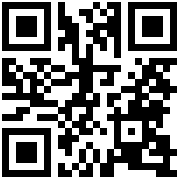The car suspension system from the original non-independent suspension to the independent suspension, and then derived from the independent suspension of McPherson, two forks and many other types, here we introduce the design of the independent suspension: multi-link suspension.
The so-called multi-link suspension, as the name implies, is a set of suspension mechanisms that connect the wheels to the vehicle body through various link configurations. The number of connecting rods is more than three, which is called multi-link. At present, the number of main connecting rods is five. Therefore, its structure is much more complicated than the double fork and McPherson. We know that the double-fork suspension is to position the wheel by the upper and lower A-shaped control arms. Since the A-shaped control arm can only float in the up and down direction, the design of the control arm length can achieve the purpose of dynamically controlling the camber of the wheel and improve the handling performance when the car turns. However, for the steering wheel and the follower wheel, the improved performance by simply controlling the camber to accommodate the curve is obviously limited. In addition to the camber angle and the toe angle are also important parameters in the four-wheel positioning parameters, how can the dynamic control of the toe angle be controlled like the camber angle? This double wishbone can do this, but the improved performance is very limited. Although the double wishbone suspension has a large design freedom in design, if a double wishbone is used to control the toe, it is common practice to put a soft rubber into the front end connection of the A-shaped control arm to the body. bushing.
When the vehicle turns, due to the different stiffness of the front and rear bushings, the wheel will change the direction of the curve to a certain toe angle. If this design is used for the rear wheel, the rear wheel can follow the direction of the lateral force, although this The steering angle is small, but the performance is still improved. By designing the stiffness of the rubber bushing to achieve a certain variable toe angle and follow-up steering function, the primary task of the rubber bushing is to connect the suspension and isolate the vibration, so the stiffness should not be too low. This results in limitations on the variable toe and follow-up steering, which allows for a small angle. The <Segmentation> multi-link suspension completely solves this problem. It uses different link configurations to automatically adjust the camber angle, the toe angle and the steering wheel to achieve a certain steering angle when the suspension is contracted. The principle is that the design of the restraining angle of the connected moving point enables the suspension to actively adjust the wheel positioning during compression, and this design freedom is very large, and can be completely matched and adjusted for the vehicle. Therefore, the multi-link suspension can maximize the grip of the tire and improve the handling limit of the whole vehicle. However, due to the complicated structure and high cost, both the research and development cost and the manufacturing cost are the highest, but the performance is in all the suspension designs. <Segmentation> This design is only used on our medium and large cars, but it is usually only used for the rear wheels. The reason is that the multi-link mechanism is very complicated and takes up a lot of space, making it inconvenient to arrange. Therefore, it can only be used on the rear axle with a large space. But there is one exception here, that is the Audi series.
Xiamen Monake Import And Export Co., Ltd. located in Xiamen Special Economic Zone in China. Which is specialized in supplying Engine Mount ( Transmission Mount ), Strut Mount, Center Support, Control Arm, etc. For various cars in Asia, European, American and Japanese brands.
QR Code
